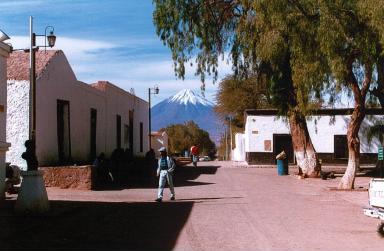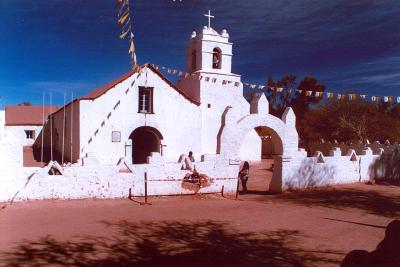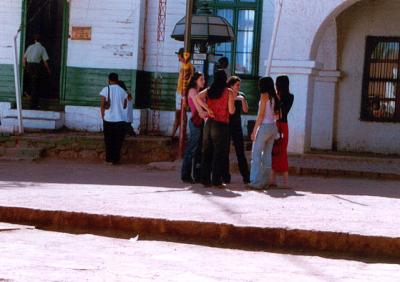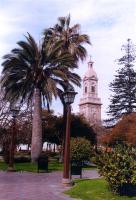|
|
|
San Pedro de Atcama
Our first day in La Serena was pleasant and we paddled in the Pacific. But the
following day as well explored the hills above the town the rain caught up with
us. It hadn't rained properly there for years and by the time we left it had
been raining heavily for over 12 hours! So we continued north in the hope that
the rain would not follow us to the Atacama desert. This was a good bet as the
Atacama is the driest place in the world.
We went to the small town of San Pedro de Atacama which lies at 2400m on at
the end of the Atacama salt flats (Salar de Atacama). To its east are the line
of Cordilero volcanos that mark the high Andes and the border with Bolivia.
 |
Because of the altitude and the clear skies, the colours are stunning all the
time. There are deep blues in the sky and lakes, brilliant whites oranges and
tans from the desert and the salt flats, bright yellow from geyser sulphur, and
flaming reds at sunset. These photos don't do it all justice.
|
|
People go to San Pedro for its amazing desert location. Its surrounded by huge
salt flats and the rugged Valle de la Luna. Nearby are flamingos, desert oasis
and across the Salar are mountains, volcanos (active and dormant), geysers,
mountain lakes, a high route to Bolivia, flamingos and the traditional
Llamas, Alpaca and Vicuna.
|
 |
 |
San Pedro is interesting in its own right. Its a traditional Spanish American
town that doesn't appear to have changed much in centuries, tourists apart. Low,
white washed, adobe buildings line the dirt streets. At the centre of town is
the traditional church which is a few hundred years old with a roof of cactus
planks.
|
|
San Pedro is very popular with Chilean's as well as Gringo tourists. We were
there during the Chilean school holidays and there were loads of Santiago school
kids around as well. Like everyone we have met in South America they were
friendly and good fun. No! Not that kind of fun. Go wash your evil mind
out!
|
 |
|
|




 Location:
Entry Page
-
Pictures
-
Chile 2001
|
Location:
Entry Page
-
Pictures
-
Chile 2001
|